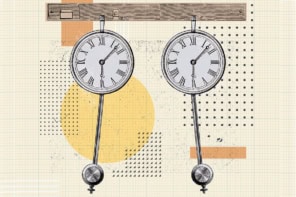For anyone who has ever experienced the frustration of tangled cables, Jens Eggers sympathizes. His team in the UK have spent the last three years trying to understand knot formation. Now they have found that cables longer than a certain length have the same probability of getting knotted, but that the time to shake out a knot increases rapidly with cable length (Phys. Rev. E. 74 052101).

The most remarkable thing about knots is that they appear to form spontaneously as soon as a cord is shaken, moved or handled. Studying knot formation, however, remains difficult without a consistent way of producing them. Rather than using string or electrical cable – perhaps the type of cords one would most associate with tangling – Jens Eggers and colleagues at the University of Bristol prefer lengths of ball chain that you would normally find attached to your bathroom plug. These have little of the stiffness that would otherwise resist the formation of loops, but are also bumpy enough to prevent knots from falling out too easily.
The team carried out a series of experiments in which they put an individual chain of a particular length onto a slightly concave plate that shook at 12 times the acceleration of gravity, bouncing the chains about for half a minute to both create and dispel knots at an observable rate. If the chain exceeded a certain minimum length, they found that the probability of knot formation rose quickly as a function of length to a steady value of 0.26 – in other words, the chance of creating a knot was 26%. In ball chains, this minimum length was about 38 beads (16 cm), or just over half the length required to manually create a knot.
Eggers says that this result is intuitive because knots arise at the ends of the chain and propagate inwards, so tend to form independent of length. However, he added, length does make a difference to the time required to shake out a knot, which escalates rapidly as the length is increased.
So does Eggers have any advice for reducing the knots in one’s cables? “It’s fairly obvious, qualitatively,” he says. “The cables shouldn’t bend too easily, and they should be fairly slippery. But in terms of the detailed parameters, that’s a non-trivial question to ask.”



